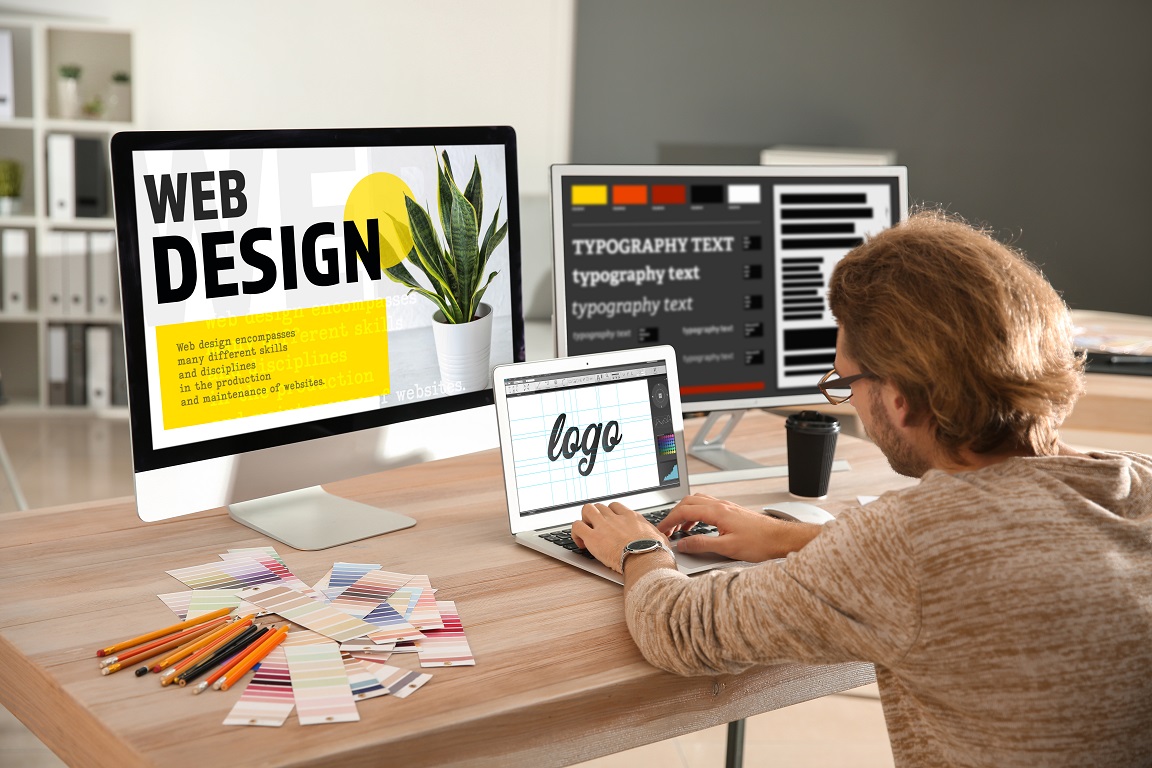The Ultimate Guide to Reliable Web Design for Modern Companies
Wiki Article
A Comprehensive Guide to Crafting Visually Appealing and Functionally Robust Website Design Solutions
A complete understanding of fundamental design concepts, along with an eager emphasis on individual experience, can considerably enhance the performance of internet services. By leveraging components such as shade concept and receptive designs, designers are geared up to create not only aesthetically pleasing interfaces however also ones that cultivate user interaction.Recognizing Design Concepts
Comprehending style concepts is fundamental to producing efficient web services that engage users and connect messages plainly. These principles work as the structure for any kind of successful design job, guiding the visual and functional aspects of a site. Secret style principles consist of balance, comparison, positioning, repetition, and closeness, each playing a critical role in developing a cohesive and aesthetically pleasing design.Contrast boosts readability and attracts interest to important attributes, enabling users to browse the content effortlessly. Repeating strengthens a constant aesthetic language, enhancing brand identification and boosting individual experience with the interface.
Value of Individual Experience
User experience (UX) is crucial in website design, as it directly affects exactly how site visitors interact with a website and perceive its value. A well-designed internet site not only brings in customers yet also keeps them engaged, eventually causing higher conversion rates and customer satisfaction. UX incorporates various aspects, including functionality, access, and the total visual charm of the site.
Additionally, positive individual experiences foster brand commitment and urge repeat sees. Inevitably, prioritizing customer experience in internet design is necessary for developing functional, interesting, and effective websites that satisfy the demands of modern-day individuals.
Shade Concept in Website Design
Shade concept plays a critical duty in web style, influencing not just the visual charm of a website but additionally the psychological actions of its individuals. Comprehending color characteristics is important for producing a reliable customer experience. Shades can stimulate certain sensations; as an example, blue commonly shares count on and expertise, while red can instill excitement or seriousness.Complementary colors can develop vibrancy, while comparable shades use an even more tranquil feel. Using tools like shade wheels can assist in recognizing efficient shade combinations.
Additionally, social context plays a substantial duty in color analysis. While white represents purity in Western cultures, it might stand for mourning in some Eastern cultures. An extensive understanding of the target market is important when using shade theory.
Including color psychology right into website design not only boosts aesthetic allure but additionally influences customer habits, directing them toward preferred activities. Eventually, a well-thought-out color technique can significantly raise the total effect of an internet site.
Receptive and Flexible Formats
In enhancement to shade theory, the framework and layout of a web site considerably influence user experience and involvement. web design. Receptive and adaptive designs are crucial methods for making sure that websites function properly throughout a multitude of tools and display sizesReceptive layout uses liquid grids and adaptable pictures, permitting the format to change effortlessly according to the viewport dimensions. This Extra resources approach makes certain a consistent user experience, as content reflows and resizes, keeping ease of access whether checked out on a smartphone, tablet computer, or desktop computer. Media questions play a vital role in responsive style by applying different styles based on the tool's features.

Both techniques intend to improve individual experience by focusing on use and availability. Selecting between receptive and adaptive formats mostly relies on project requirements, target audience, and desired user communications, ultimately adding to the performance of internet design services.
Screening and Optimization Strategies
Examining and optimization strategies are vital elements of efficient web layout, guaranteeing that sites not only meet individual expectations yet additionally do successfully throughout various platforms. These methodologies incorporate a range of methods targeted at examining usability, capability, and total performance.A/B testing is a fundamental strategy, permitting developers to contrast 2 variations of a websites to identify which performs better in terms of customer interaction and conversion prices. Customer testing is equally essential; it includes gathering feedback from actual customers to identify discomfort factors and locations for renovation. This qualitative data can direct style adjustments that boost individual experience.
Furthermore, efficiency optimization techniques such as picture compression, code minification, and leveraging internet browser caching can considerably enhance webpage tons times and responsiveness. Tools like Google PageSpeed Insights and GTmetrix provide important metrics for assessing website performance, allowing developers to make data-driven choices.
Conclusion
Receptive designs contribute to a seamless individual experience across devices, further promoting interaction. Eventually, the application of these methods not only elevates individual satisfaction but additionally drives conversion prices, solidifying the importance of a click to investigate detailed design framework.Report this wiki page